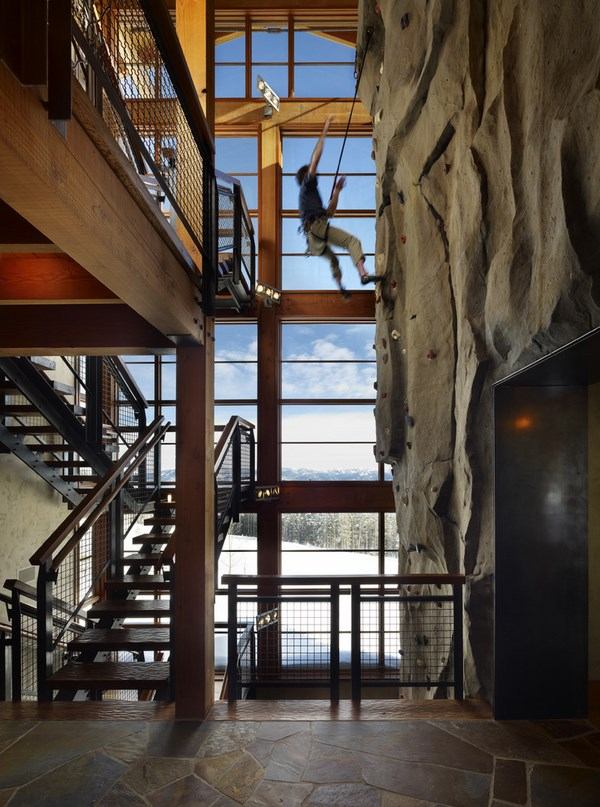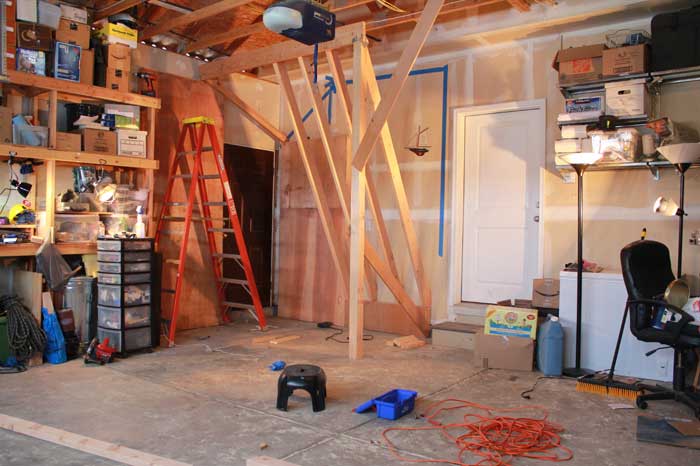Table of Content
This creates another point of contact with a high level of friction, helping to resist rotation. It's not the most bomb-proof technique, but if you want to protect your climbing surface from screw holes and you can't block the hold in place, this is worth a try. Pronged T-Nuts are the easiest to find, cheapest, and simplest to install option, but they are more prone to spin out, popping out the back, and blowout . They are simply hammered into place, but this means if pushed from the front they can just come right out.

Flip the sheet of plywood onto its back and use a hammer to pound the nuts into each hole. Make sure the back of the nut is flush with the back of the plywood. If you want a clean layout, draw a grid on the plywood so each square is 8 in × 8 in (20 cm × 20 cm). If you want a more eclectic look, put the holes in random spots.
T-nut Spacing on a Climbing Wall
If you’re putting a flat wall on existing studs like me, all you need are a couple of plywood sheets (each 4×8 feet), deck screws, a 7/16 drill bit, and lots of T-nuts. That covers construction materials, but don’t forget about the climbing holds. While we were excited to slap the boards on the wall and get climbing, it was immediately clear that a bit of planning would go a long way.

You will have much hard potential, and get stronger quicker, on steeper walls. Climbing shoes come in a variety of styles and sizes, so it’s a good idea to get a pair that fits you well. A good pair of shoes will also help keep your feet warm and dry, as well as protect them from the elements. You can also choose from a wide range of colors, including black, white, red, blue, green, yellow, orange, purple, pink, and white. Don’t forget to test the holds before you use them to ensure they’re secure. As you become more experienced, you might want to add more features to your walls, such as an overhang or a crack.
Building the Wall Itself
If the wall is located outside, you should anticipate that the bolts will corrode with time. In most cases, you will not have anything to be concerned about if you do not intend to rearrange your holdings regularly. As you stack your blocks , use mortar to fill the spaces between each block that has a reinforcing rod.
To ensure that the rebar runs uninterrupted to the top of the wall, add more rebar with a 32-inch lap. The lowest portion of the wall should be backfilled to the regular ground level and then compacted. Your wall will be better able to withstand strong winds and avoid toppling over with this soil fill at the base. Install a footing made of concrete that is at least eight inches thick, twenty-four inches wide, and 2 or 3 feet below the ground’s surface using reinforcing rods . To do this, set the holds so that moving from one to the next is within your comfort zone.
Building a Climbing Wall
If you do want to move holds around, it may be difficult unscrew them once they have become rusted. You can also find holds pretty cheap if you hit your local climbing gyms. Many times they replace their old holds and will give you or sell you their old holds at a pretty low price.
A single mistake in this step will cost you way more than your budget for this project. Your homemade rock climbing wall needs robust, rock-solid support. Second to last step is to attach your climbing holds to the wall. If you're using a more common grade plywood or pronged T-nuts, 10 ft-lbs is about as high as you want to go before running the risk of crushing your plywood. T-nuts are small, tubular, threaded inserts with a flange on the backside to prevent them from being pulled through the plywood. Typically you want to avoid this stuff for a highly tactile surface like a climbing wall.
Some holds are attached with only screws and are called, obviously, screw-on holds and all you will need is some screws and the appropriate screwdriver. Steeper walls will require more framing that should be designed specifically to support the wall.Again consult an engineer. Please note, we have provided some very useful guidelines and information here, but we cannot take any responsibility for your build. Each home is unique, and it is your responsibility to ensure that the home structure is fit for the application and that any structure you build is sound. If you have any concerns, we highly recommend consulting a professional. If you plan to have your wall exposed to the elements, especially anything salty, you should consider buying stainless steel bolts.
You will find variations of up to 24” spacing, but these are typically in older homes. These standard spacings will vary to accommodate doorways, windows, etc. and may not always line up perfectly with the end of a wall. From this point forward we are going to assume you have foundational knowledge and skills with the basic tools and techniques of simple carpentry.
You can also build it in the attic, but you’ll definitely disrupt the peace of the entire house every time you fall. In any case, be mindful of ventilation, access points, and electric points when building indoors. The holes are drilled, now it is time to hammer in the t-nuts.

Climbing holds are attached to a climbing wall in two ways. They are either bolted on, using a preset “T-nut” in the wall, screwed directly to the wall, or a combination of the two. In the US this is most commonly found in basements, but around the world it is commonly used for the majority of the walls of the structures. These walls can provide a very solid foundation for a climbing wall, but require pre-drilled holes and more expensive fasteners.
By following these steps, your wall will start to look more like it is. Cover the lath with a half-inch coat of masonry cement plaster. This “coat,” also known as the scratch coat, must be scored so that the finish coat may adhere to it. After the scratch layer is completely dry, you should add a final coat of synthetic plaster or masonry cement blocks of concrete . In addition to this, you should get started sketching the kind of wall that you desire. So if you have specific needs, you may need to supplement your hold supply with standard commercial holds.

No comments:
Post a Comment